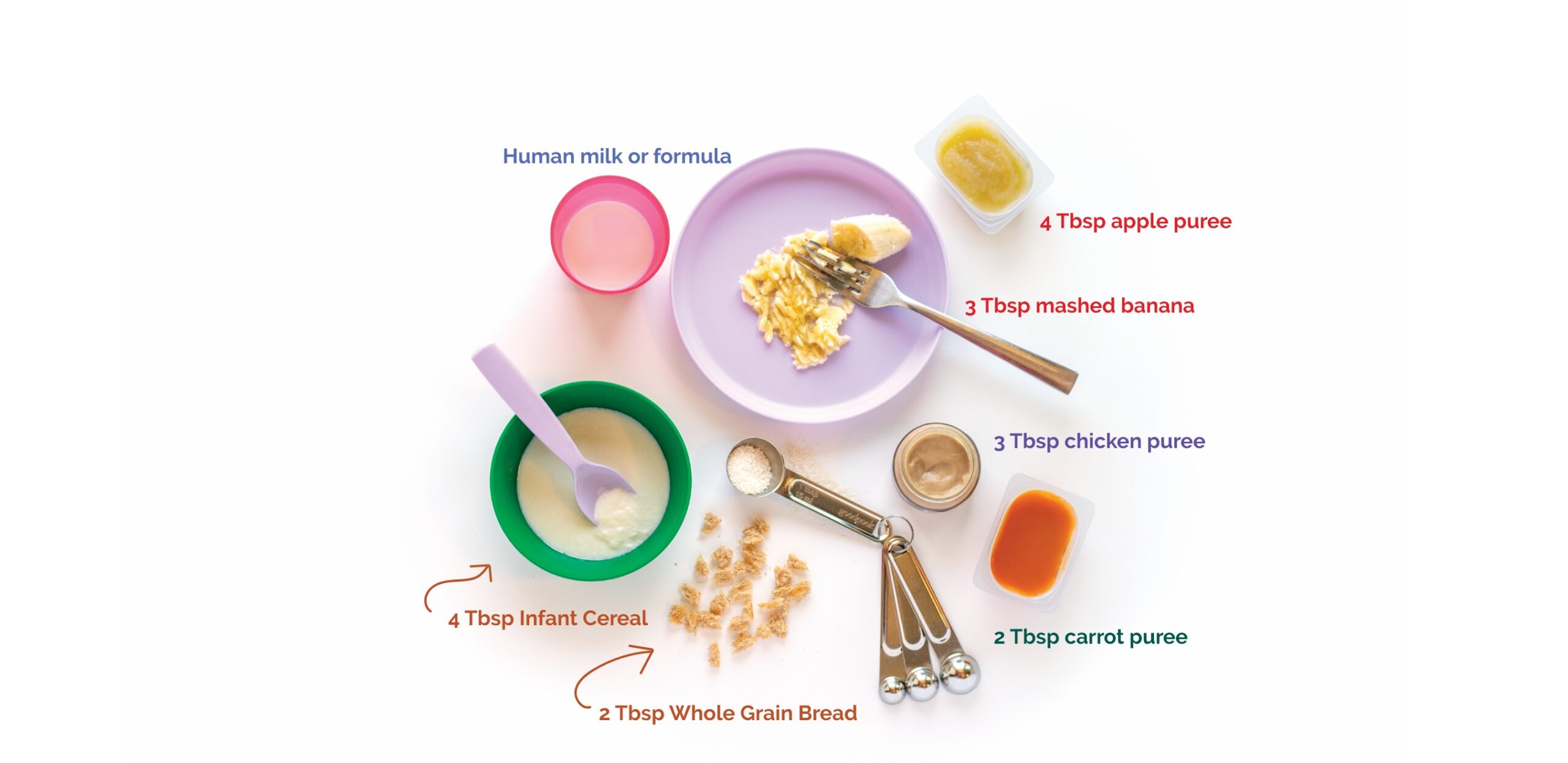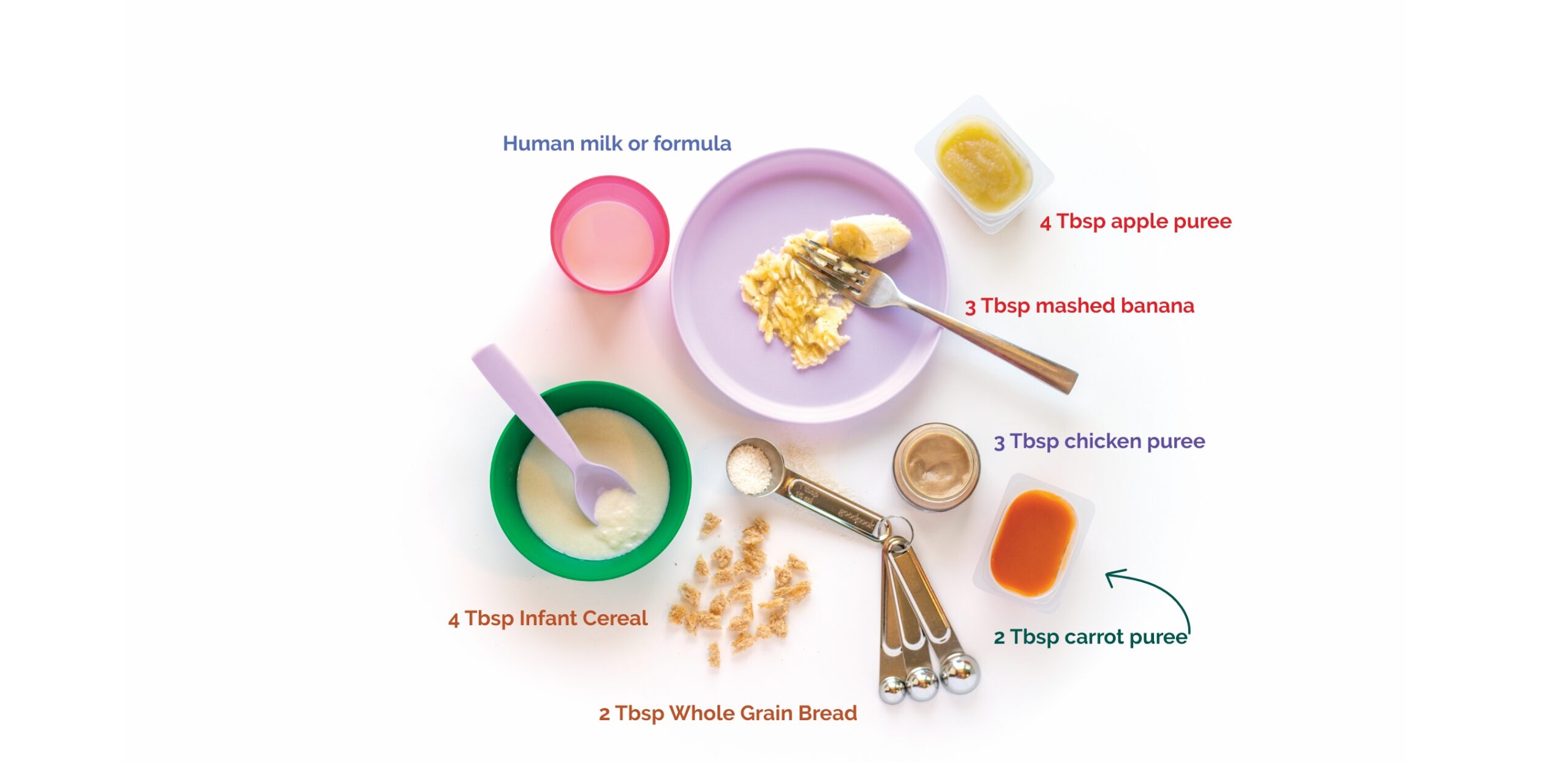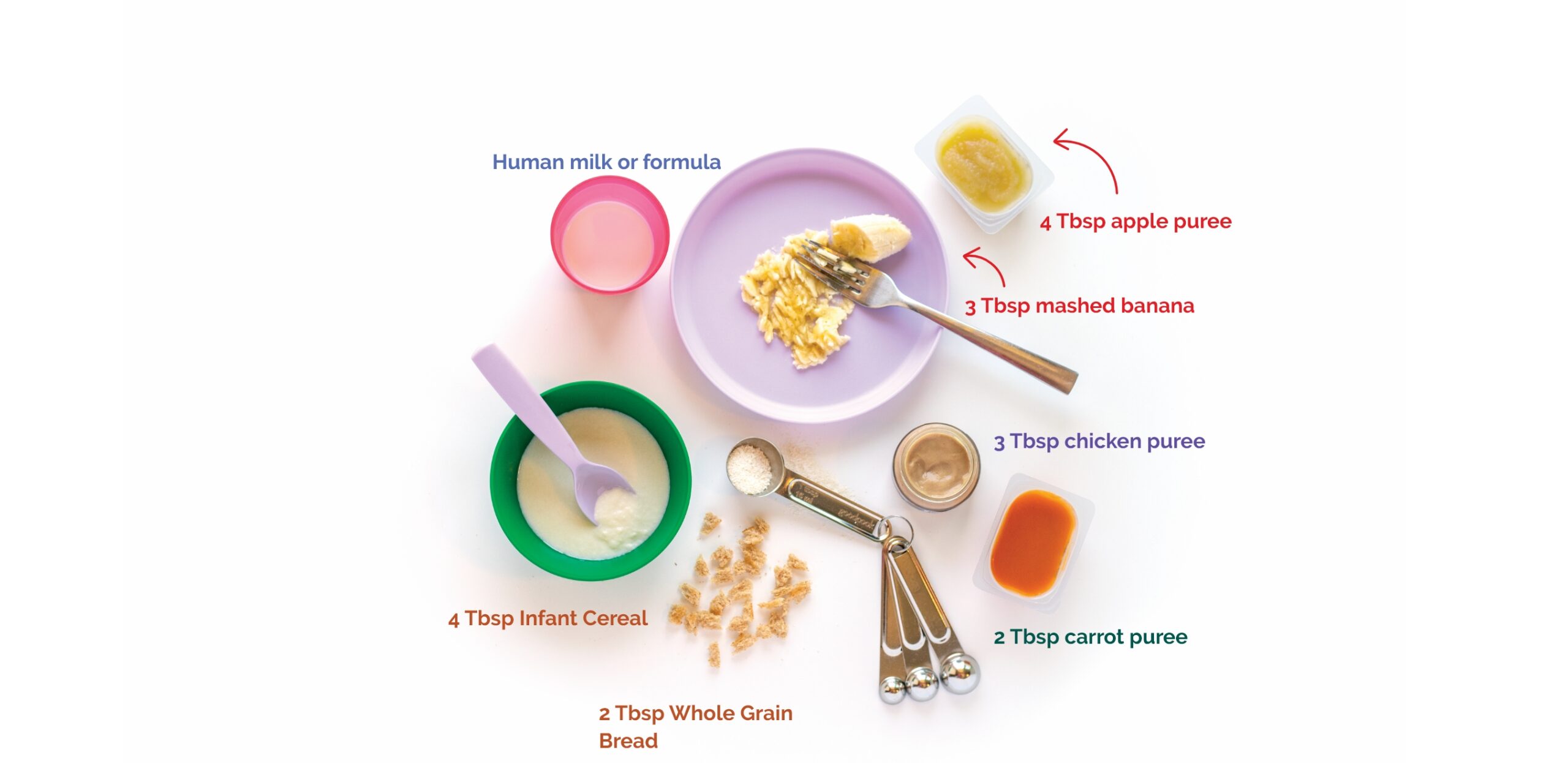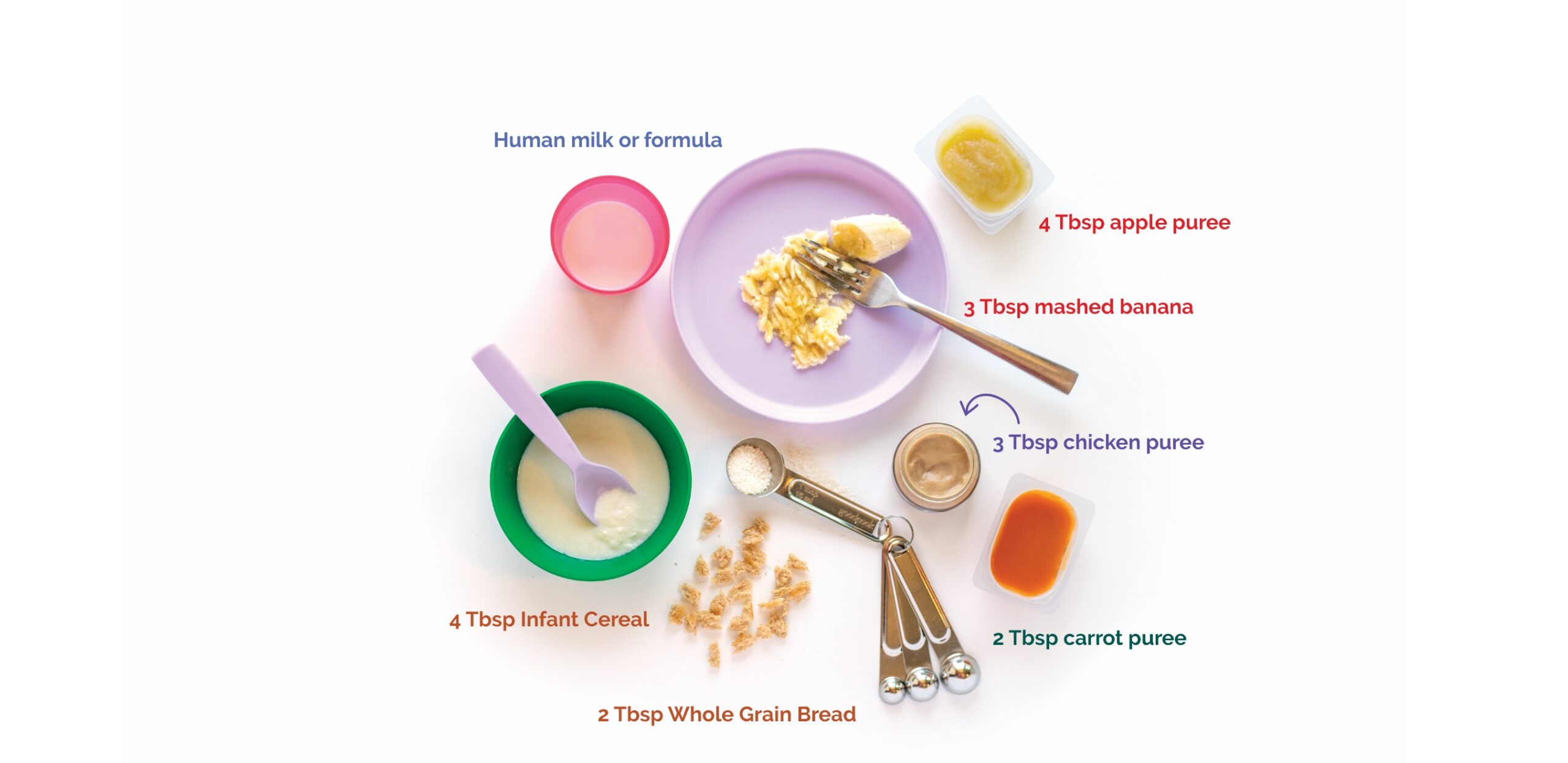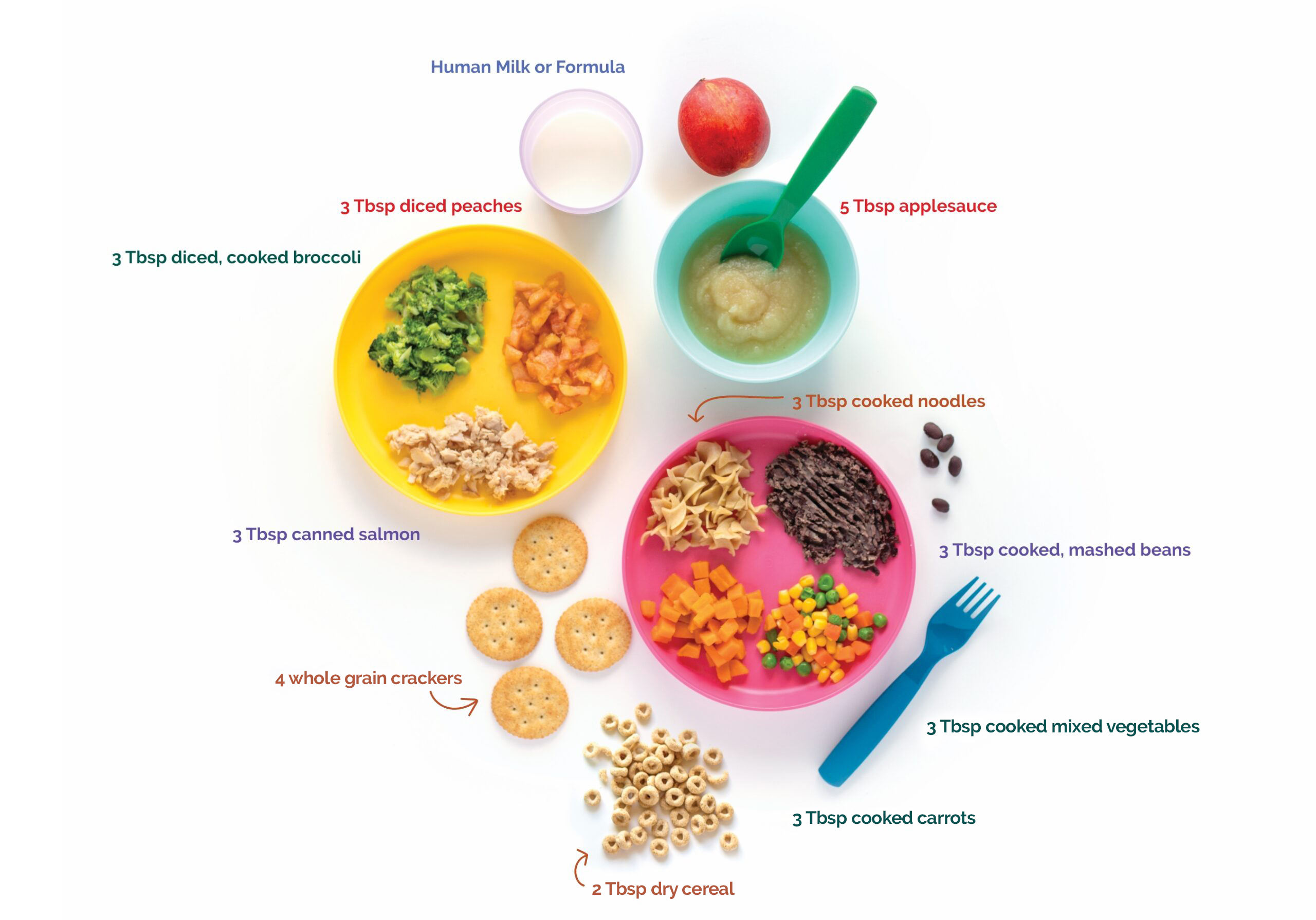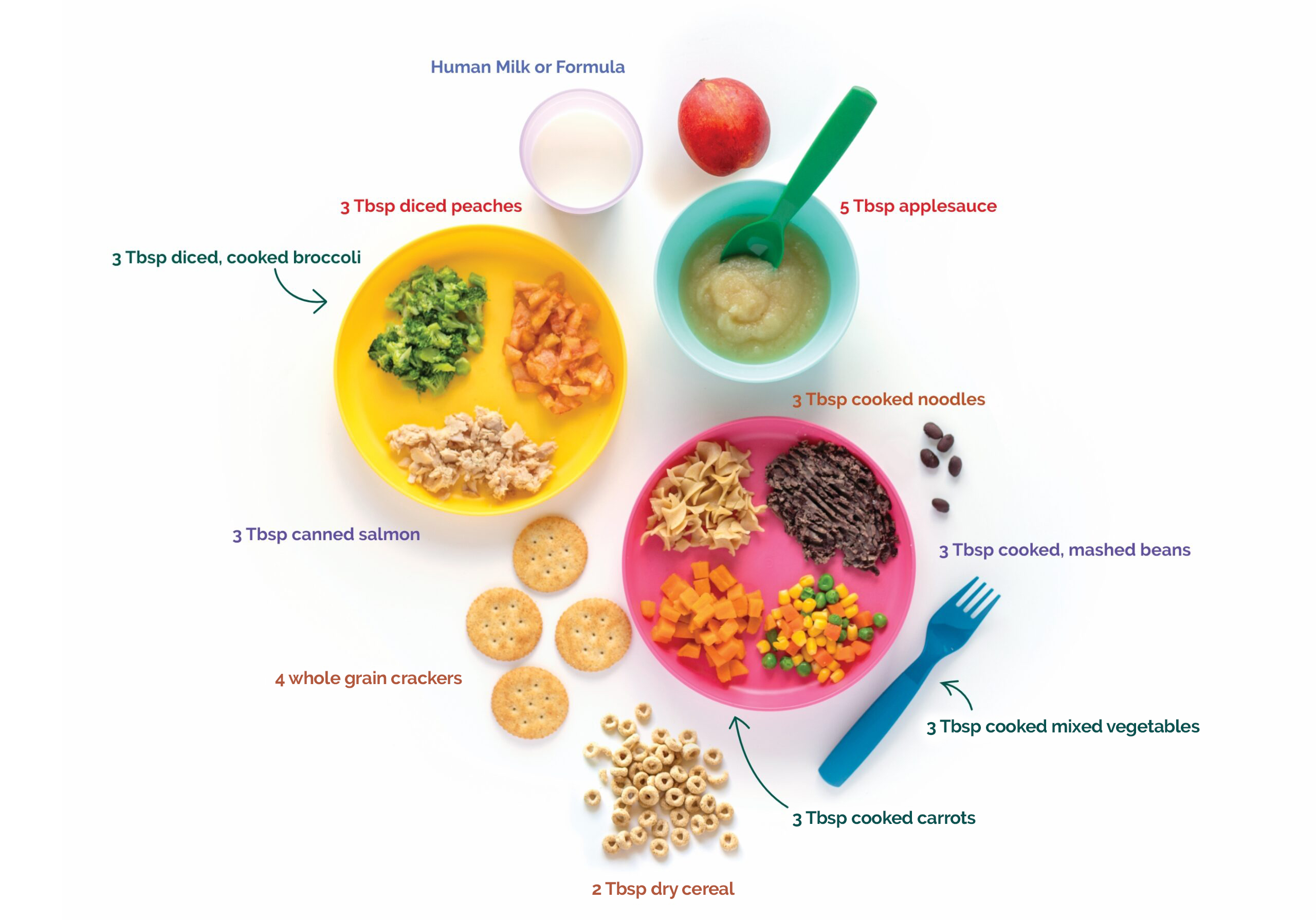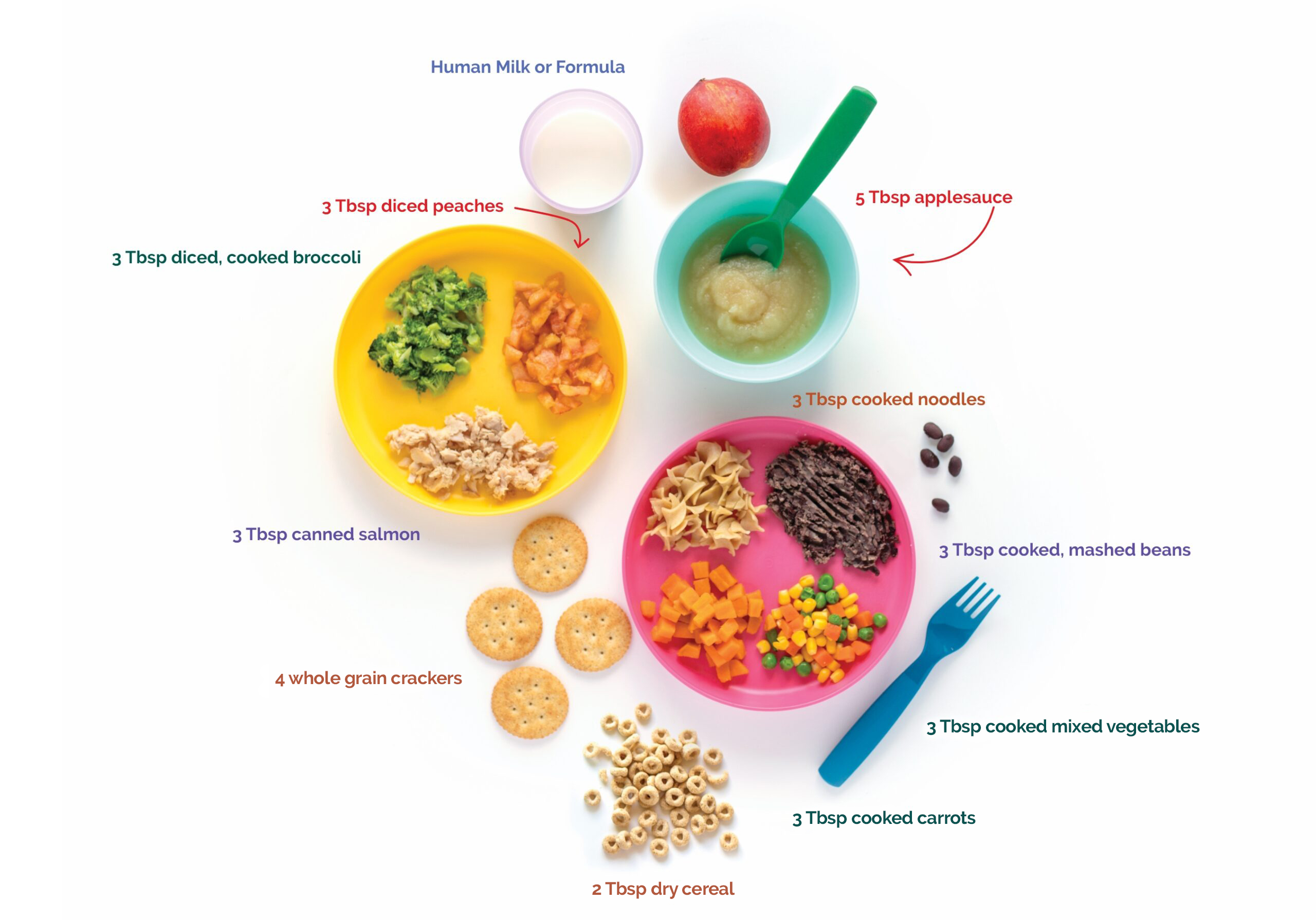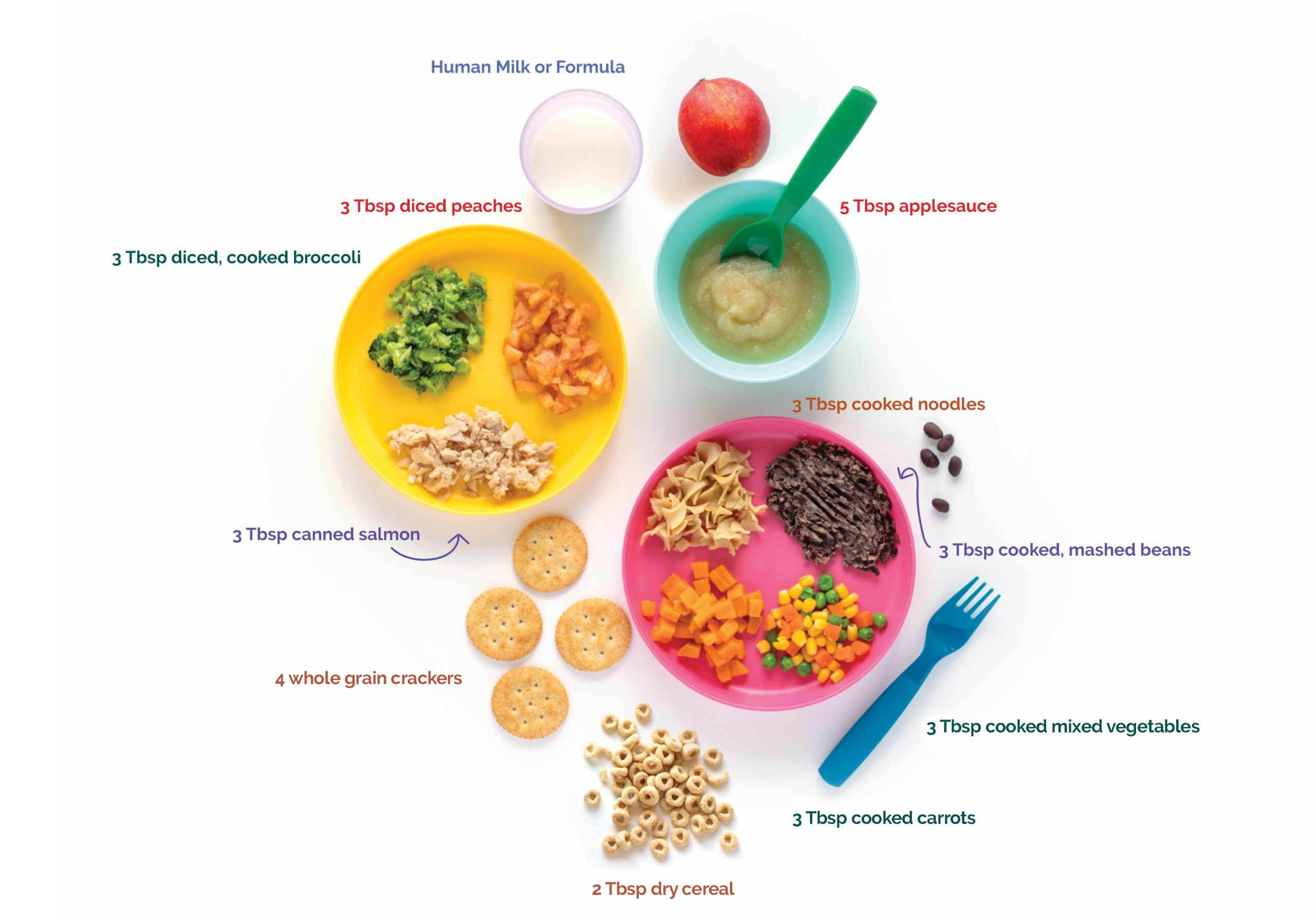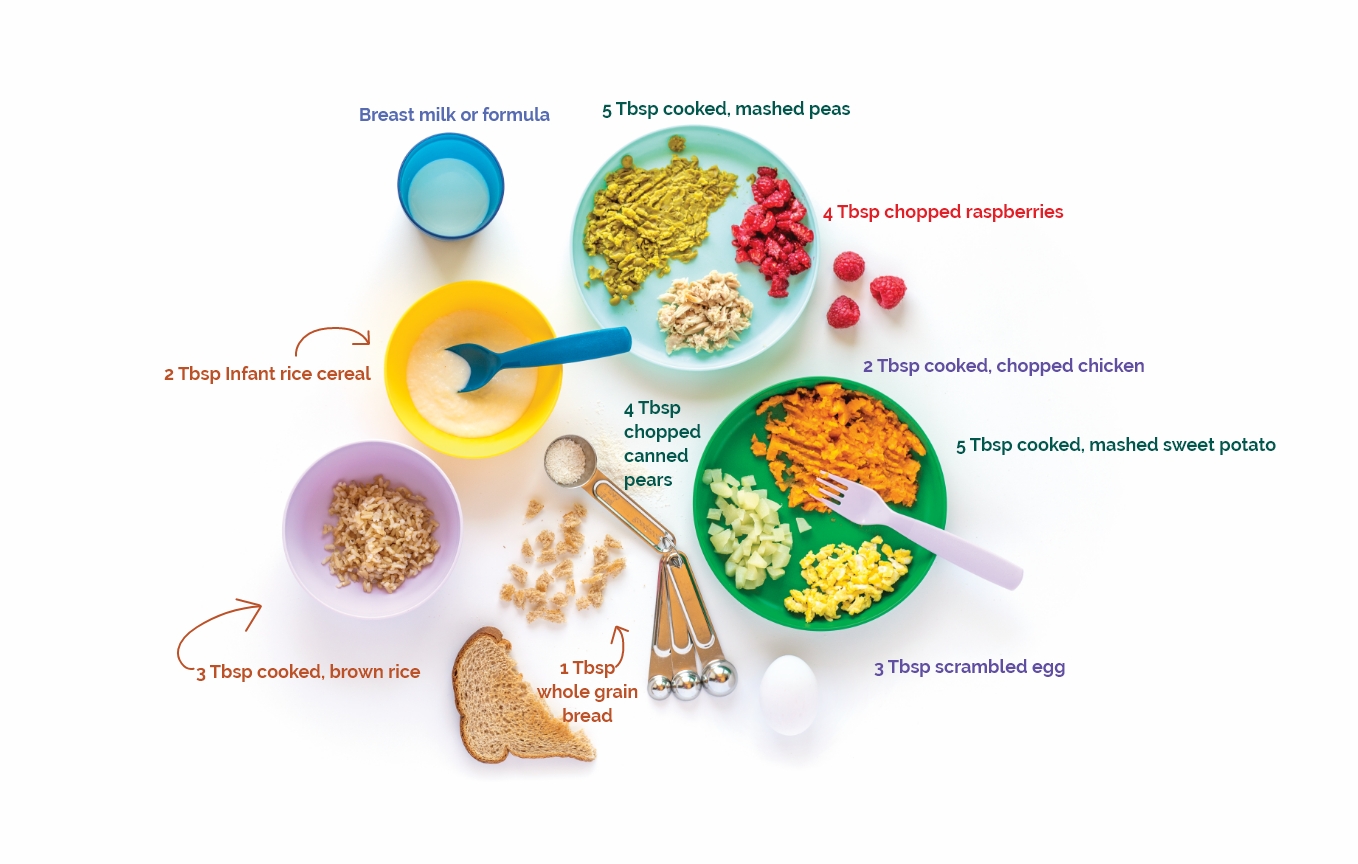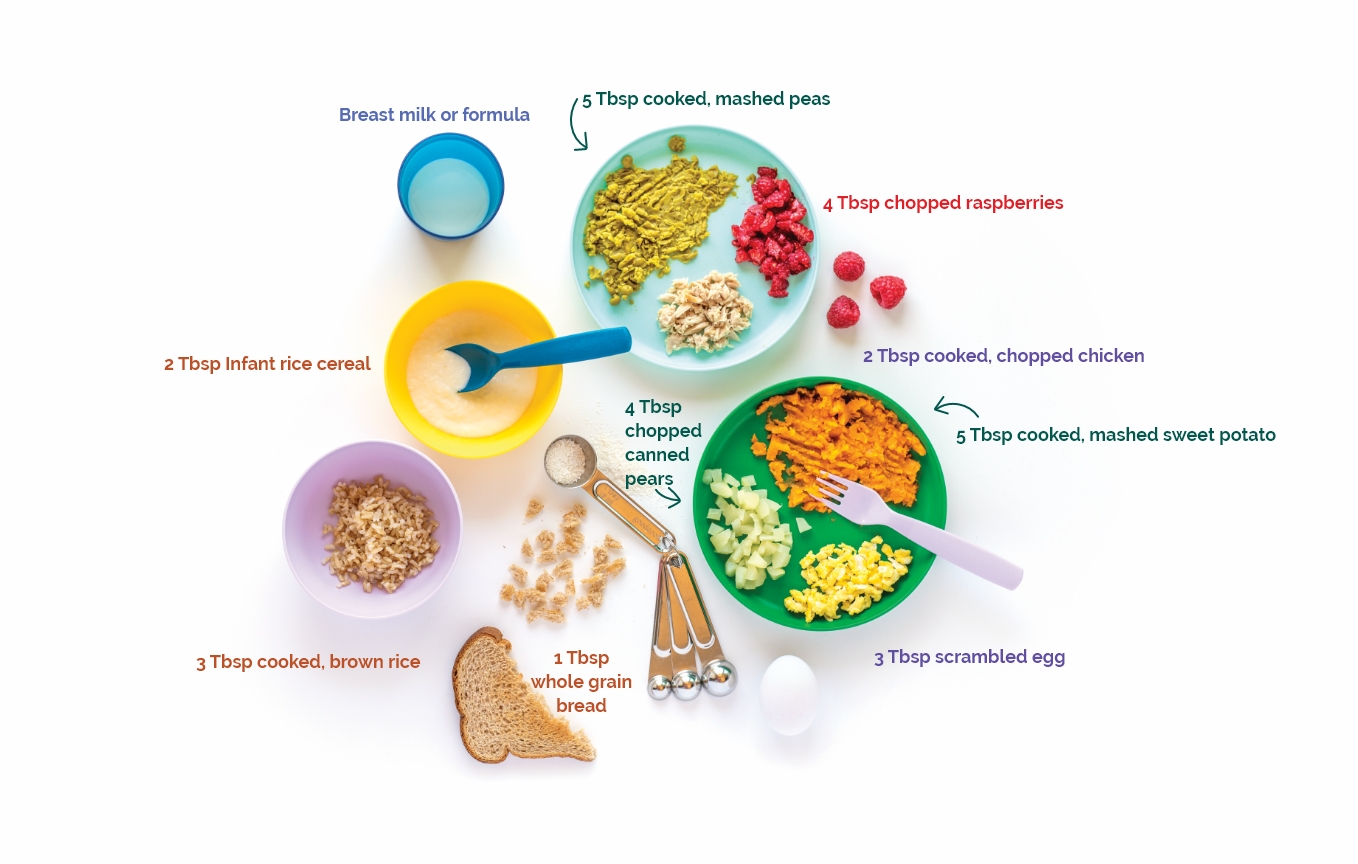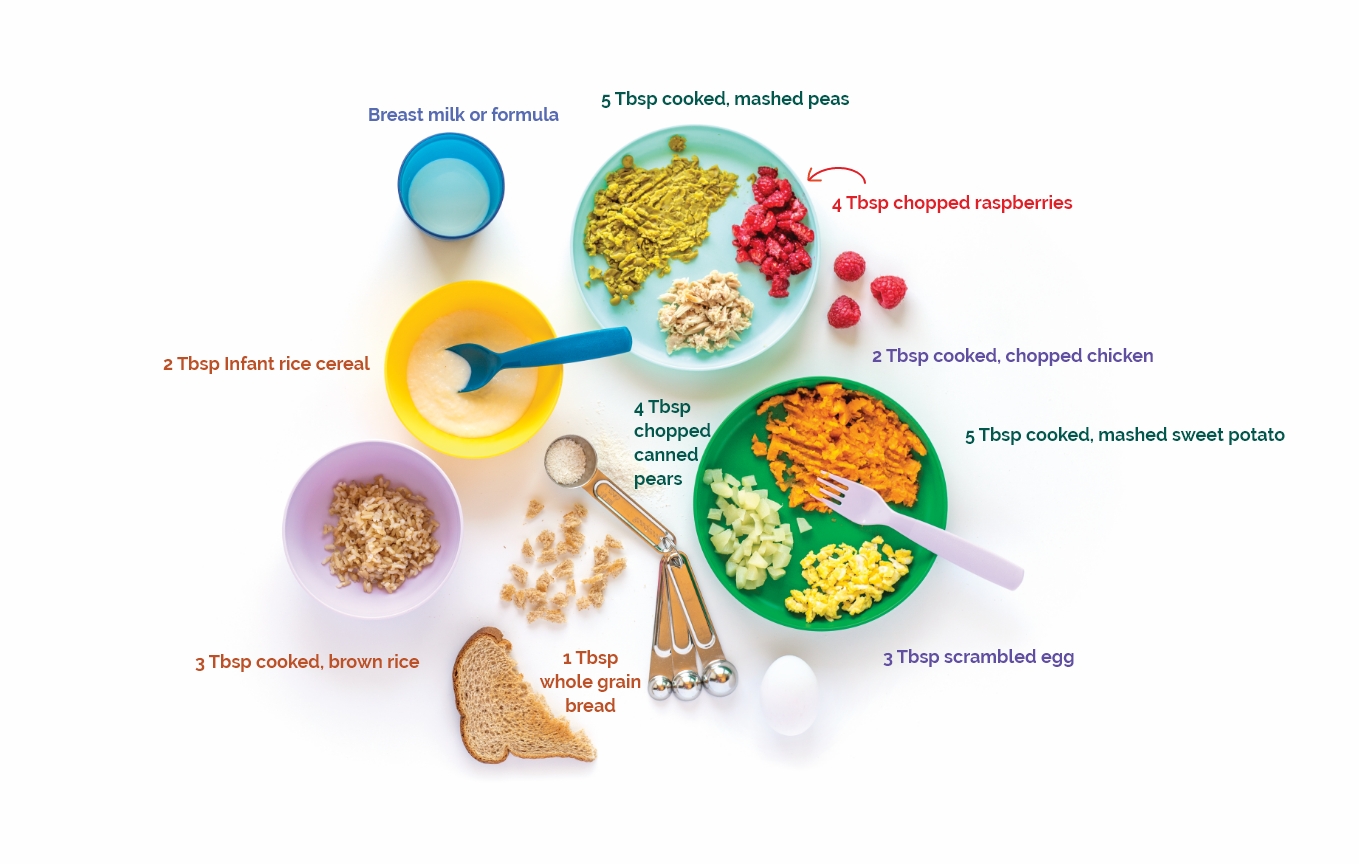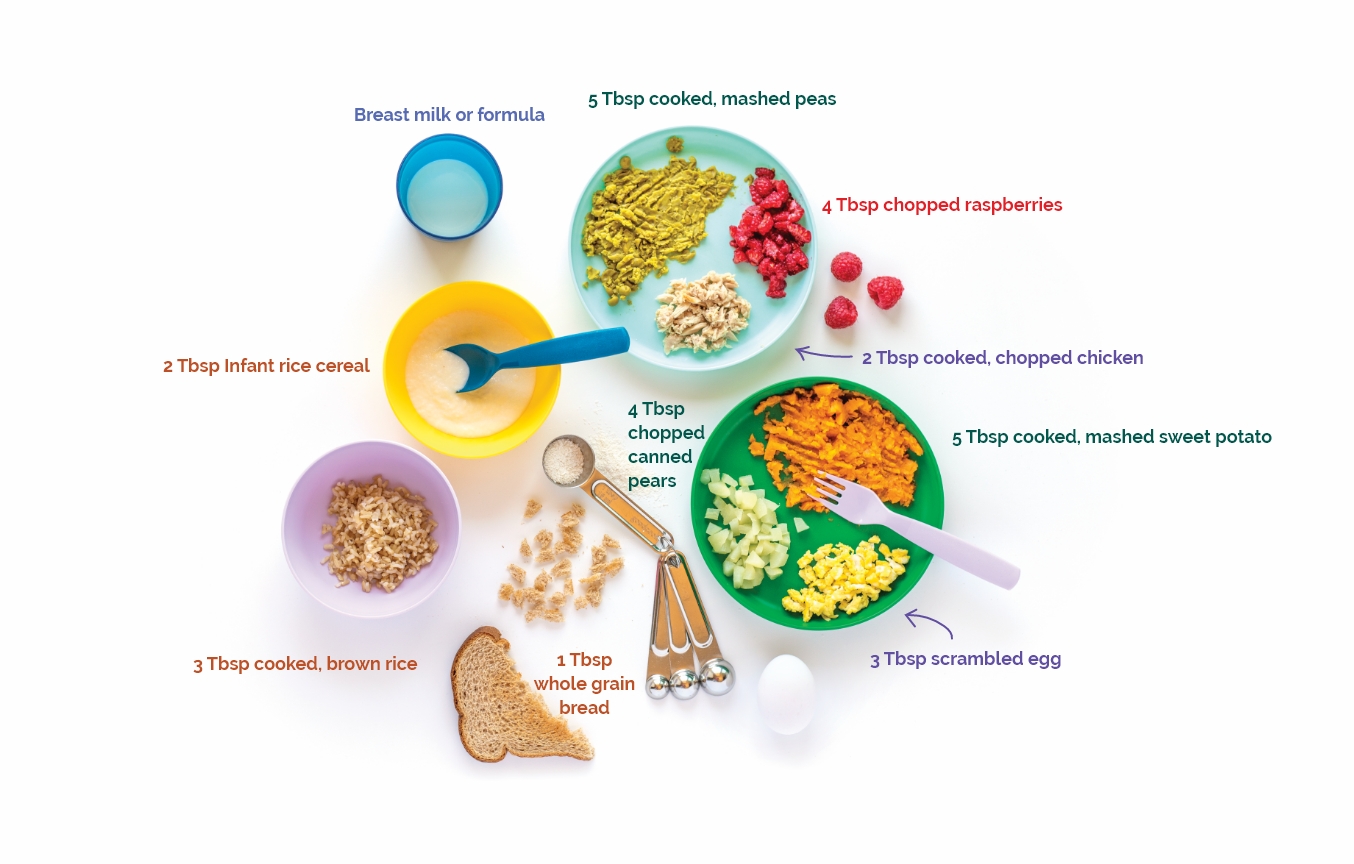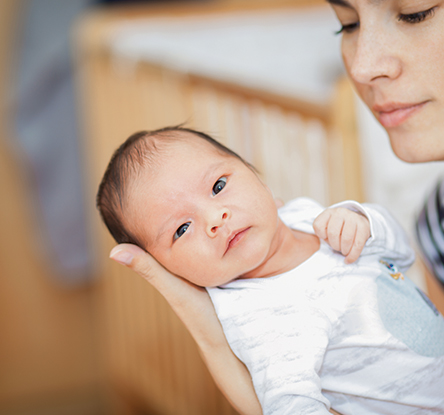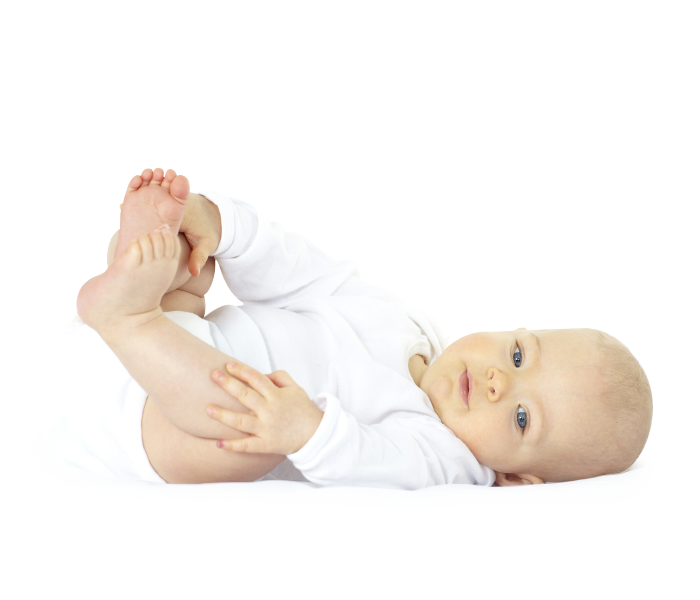I Am Your Baby
I grow best with love and the right food.
- I need breast milk or formula with iron until I turn one. You can still breastfeed me after I am one year old.
- I know when I am hungry or full. I let you know by the way I act. Please feed me when I act hungry. Let me eat until I am full.
- I will have a growth spurt around 6 months. I might nurse more often or longer.
- I am growing fast. If I take breast milk or formula from a bottle, there might be times I drink more than 4 ounces at a feeding.
- When I am about 7 or 8 months old, help me learn how to drink from a cup. Offer a cup with breast milk, formula, or water at meals and snacks.

With Your Help I’ll Learn to Eat Foods
When I’m about 6 months old, I can start to eat solid foods. Please go slowly.
If our family has allergies or I was born early, talk to my healthcare provider or WIC before I start solid foods.
Be Sure I’m Ready
To eat solid foods, I must be able to:
- Sit up and hold my head steady.
- Show I want food by opening my mouth or taking it from a spoon.
- Show I don’t want food by closing my mouth or turning my head away from you.


I Will Go Through 4 Stages of Foods:
1
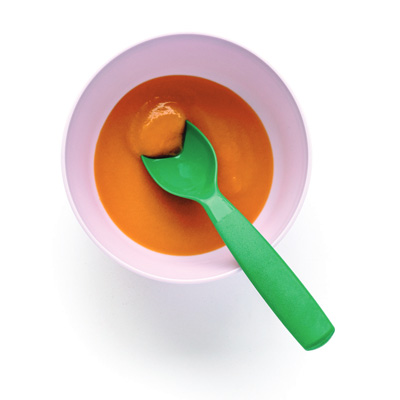
2
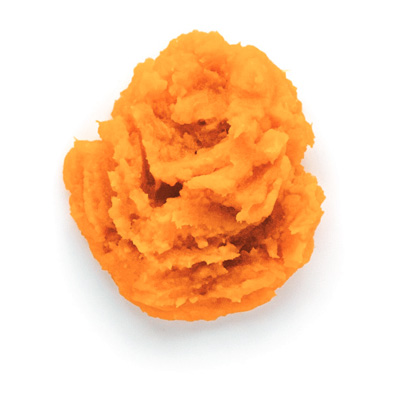
3
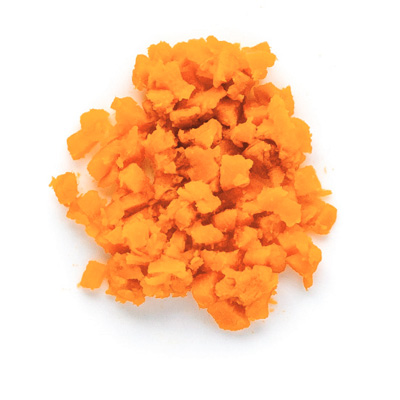
4
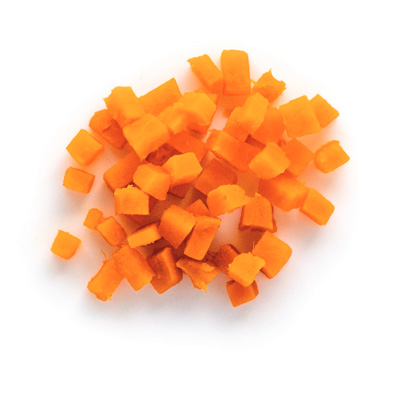
Make My First Food a Single Food
Baby cereal is often a first food. Choose single ingredient cereal (oatmeal or rice). Start by mixing 1 tablespoon cereal to 4 ounces of breastmilk or formula. This will be thin and the baby might push it out of the mouth at first. Baby is getting used to moving food in the mouth. Gradually make the baby cereal thicker by mixing it as follows:
- 1 Tbsp cereal with 4 oz. breastmilk or formula
- 1 Tbsp cereal with 3 oz. breastmilk or formula
- 1 Tbsp. cereal with 2 ounces of breastmilk or formula. This will be the final consistency which will be similar to cream of wheat or grits.
Wait at least 3 to 5 days before trying another new food.
- Build on the foods I tolerate. Offer what you know I like along with a new food. I will like the variety.
- Watch for signs of food allergies like vomiting, wheezing, diarrhea, skin rash, or swelling. If I have a reaction to a new food, call my healthcare provider or take me to the emergency room.
I Need to Eat My Way
- I’ll open my mouth if I want more food.
- I’ll keep my mouth closed or turn my head if I don’t want more food; don’t force me to eat.
- I might spit food out or make a face. I’m learning new flavors and how to move food around in my mouth.
- If I don’t like something, wait a week and let me try it again. I might need to try a new food 10 times before I like it!
- I’ll get food on my hands, face, and in my hair. Try not to stress about the mess. Be proud of me as I learn to eat.
- Let me feed myself with my hands or a spoon. I use my jaw to mash food and my tongue and fingers to move it in my mouth.
- Eat with me at our family meals. I eat better when you are with me. Let’s turn the TV and cell phone off so we can talk.
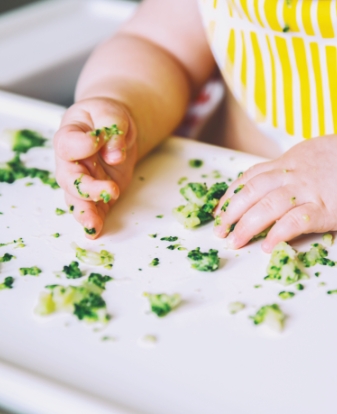
Let Me Eat Food With My Fingers
By 8 or 9 months, I might want to eat food with my fingers. You still need to use a spoon to feed me, but let me try to feed myself, too.
Make foods safe so I won’t choke on them.
Safe “finger” foods are:
- Tiny pieces of cooked vegetables or soft fruit
- Tiny pieces of cooked meat, chicken, or turkey
- Mashed cooked beans, egg yolk, or tofu
- Chopped noodles or rice
- Bite-size pieces of toast, plain crackers, or soft tortilla
Make pieces of food no bigger than your thumbnail.
How much should I eat?
I need to eat about 5 or 6 times a day. A meal might be breast milk or formula, or a meal might be breast milk or formula plus infant cereal. Start with 1 or 2 tablespoons of each food. Give me more if I want it. I may not eat everything on my plate. As I start eating more, you can give me 2 or 3 foods at a meal.
Here are some ideas:
6 - 8 Months
2 tablespoons pureed peaches

3 tablespoons cooked whole grain pasta
8 - 10 Months
3 tablespoons mashed peas
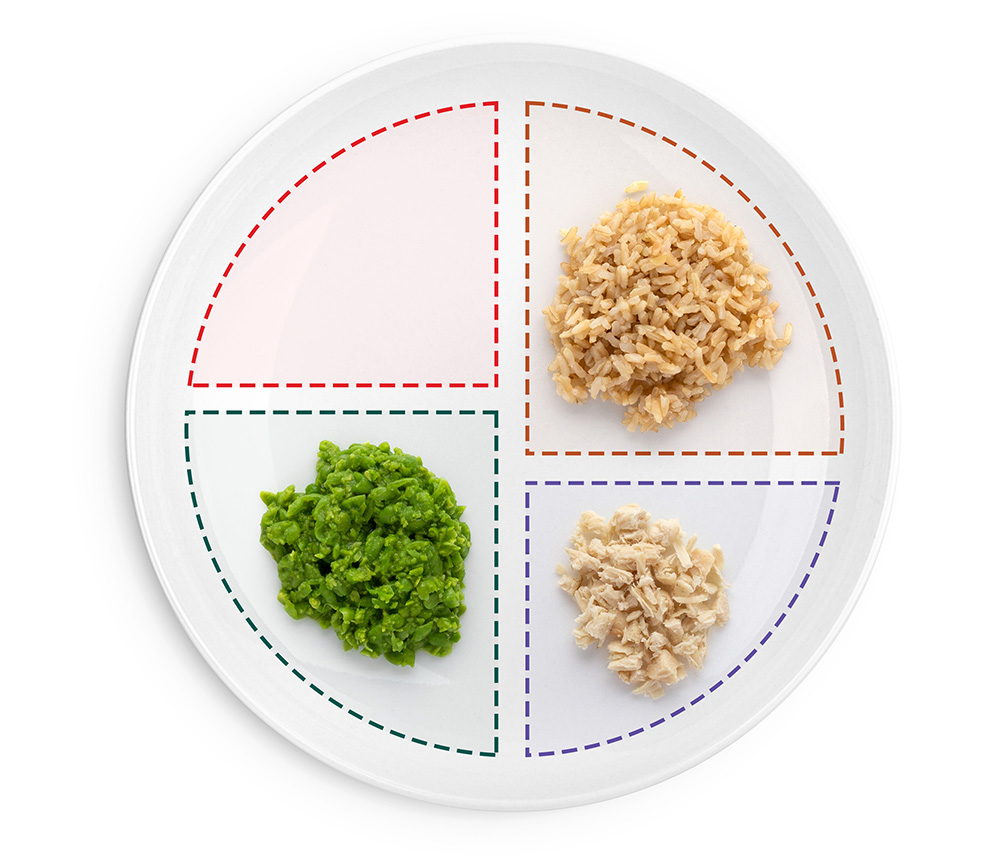
3 tablespoons cooked brown rice
1 tablespoons baked, chopped chicken
10 - 12 Months
2 tablespoons diced avocado
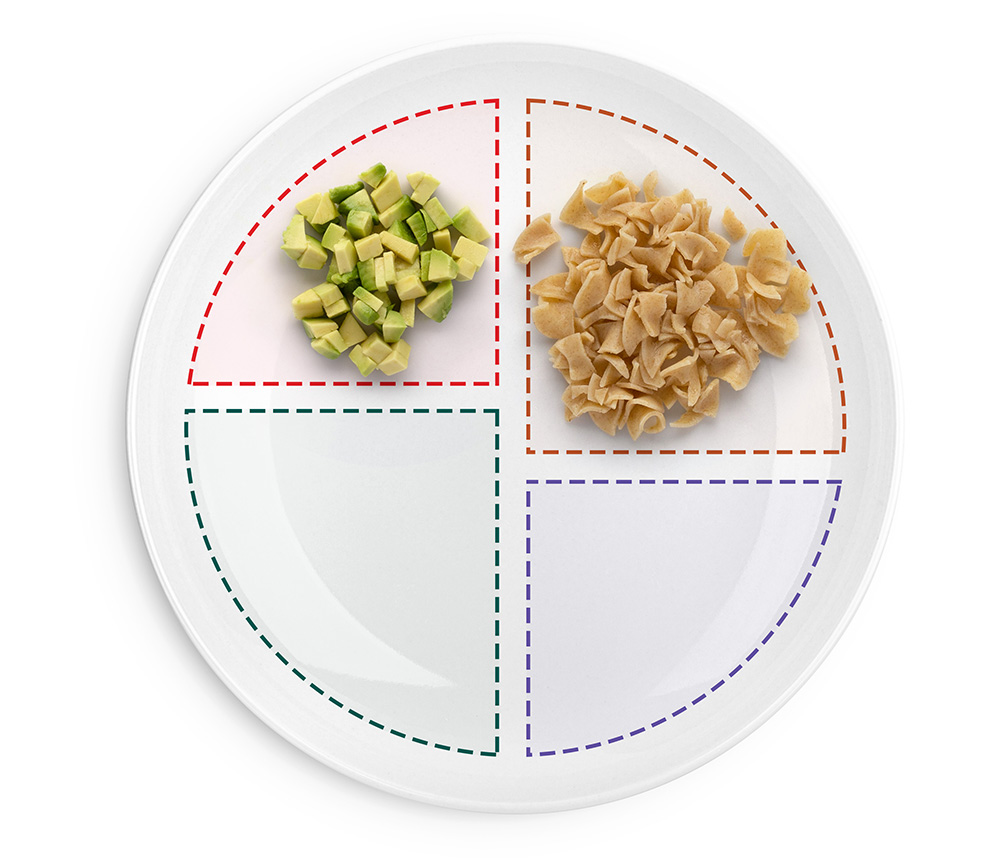
3 tablespoons cooked, chopped whole grain pasta
Let me eat until I show signs I’m full. I might close my lips, turn or shake my head, or raise my arm. Ask me if I’m full. Then, let me stop eating if I want to.
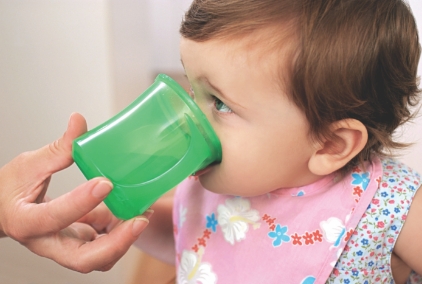
Time for a Cup
When I turn 6 months old, you can give me a small amount of water as I learn to drink from a cup.
Food Safety
- We need to wash our hands before making my food or feeding me.
- Put my food in a small dish and feed it to me with a baby spoon.
- Throw out any food, breast milk, or formula left in a bottle, cup, or dish after I eat.
- Don’t heat my food in a microwave. It could burn my mouth.
Introducing Peanut Butter
After I have tried other solid foods, introduce me to peanut butter. Doing this can be helpful if our family has food or egg related allergies, like eczema or other skin issues.
Spread a small, thin smear of peanut butter thinly on a cracker or mix it with applesauce and cinnamon and spread thinly on bread. Watch me for the next 2 hours to make sure I don’t have a reaction.

Foods to Avoid
I need food that is right for my age and will help me grow best.
I don’t need added sugars, salt, fat, or additives. Wait to offer juice until I am at least 12 months old.
Don’t give me foods I can choke on, like:
- Raw vegetables
- Bacon
- Whole grapes
- Fish with bones
- Potato, corn, or tortilla chips
- Popcorn
- Hard candy
- Nuts
- Hot dogs
- Meat sticks
Also, please don’t give me foods that could make me sick, like:
- Cow’s milk
- Rare or raw meats
- Honey or food made with it. Honey sometimes contains bacteria (Clostridium Botulinum) that can make babies sick. I shouldn’t have honey until I’m at least 12 months of age.
Play with me!
Put me on a blanket on the floor. Put a toy just out of my reach so I can move to get it. Roll a ball to me. Hold both my hands and let me walk with you.
Look what I can do!
I love to learn from you. Read to me. Sing a song. Let’s play games like peek-a-boo. Take me for a walk and show me new things. I’m active — keep an eye on me!
I can sit up and roll over. I’ll start to creep and crawl. I like to shake things and drop them to see what happens.
I like to use my hands. I can hold my cup. I like to point and wave bye-bye. I say da-da and ma-ma. I can pull myself up to stand.

Keep me safe and healthy
- I need check-ups and shots to stay healthy. I should visit my healthcare provider at 6 months, 9 months, and 1 year of age.
- Clean my gums and teeth with a clean, wet, soft cloth after I eat. Ask the dentist if I need fluoride.
- Never put me to bed with a bottle. I could choke, get an earache, or damage my teeth.
- If other people feed me, be sure to ask what and how much I eat.
- Let me explore and learn. See each room like I will, from the floor, and make it safe for me.
- Keep me away from cigarette, tobacco, and all other smoke or vapor. Smoke hurts my lungs and can make me sick.
- Buckle me into an infant car seat before we ride in a car. It’s the law! Install my seat in the car’s back seat, rear-facing.
